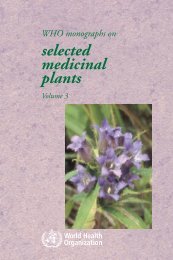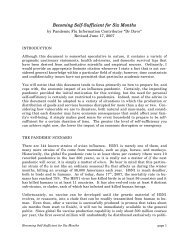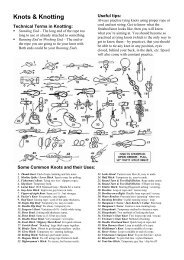Create successful ePaper yourself
Turn your PDF publications into a flip-book with our unique Google optimized e-Paper software.
Puffballs<br />
Anyone who has kicked a ripe puffball and has seen the cloud<br />
of powdery dust it shoots out knows why it was given this name,<br />
but not everyone knows that the little puff of powder contains<br />
millions of spores that serve to disseminate the fungus over the<br />
surface of the earth. The curiosity of man, which leads him to<br />
pick up such plants — perhaps even his anger at seeing an unknown<br />
plant, which leads him to destroy it with a kick — doubtless<br />
aids the humble puffball in liberating its spores. The tops of<br />
some puffballs crumble away at maturity, allowing the wind<br />
to spread the spores. Other kinds have only a pore at the top<br />
through which the spores escape, the force of even a gentle raindrop<br />
on the outside covering being enough to send out a million<br />
spores or so. In anything but a downpour these spores will travel<br />
some distance before being washed out of the air. Obviously there<br />
is a tremendous waste of spores, since the fungus depends upon<br />
the whims of the wind, and out of the billions of spores produced<br />
by a fair-sized specimen probably only a very few ever find a<br />
suitable place to grow.<br />
Before the days of modern medicine, puffball spores were used<br />
as a styptic powder to stop bleeding, and even today in some<br />
places they are thought to be effective in the treatment of certain<br />
disorders. Children often believe that if puffball spores get<br />
into the eyes they will cause blindness, but this of course is pure<br />
superstition.<br />
All the above-ground puffballs are good to eat, and they are<br />
believed by many to be superior to any other edible fungi (see<br />
"The Foolproof Four"). They must be picked while still solid<br />
and white inside and should be examined fairly carefully for the<br />
presence of maggots. The pear-shaped puffball, Lycoperdon pyrijorme<br />
(Figure 2, page 20), is found in groups on rotten wood,<br />
and though small is of excellent flavor.<br />
8?
















